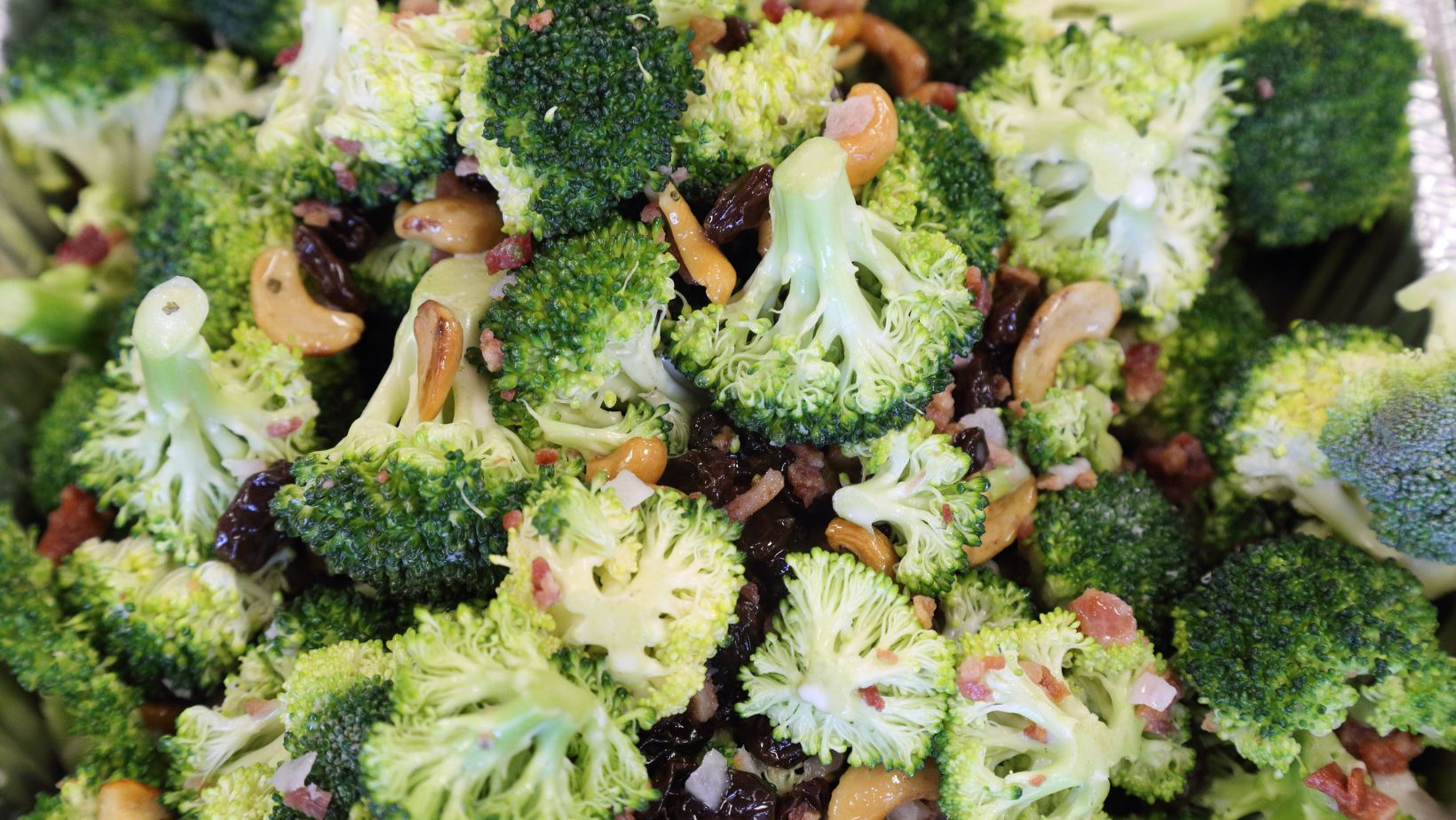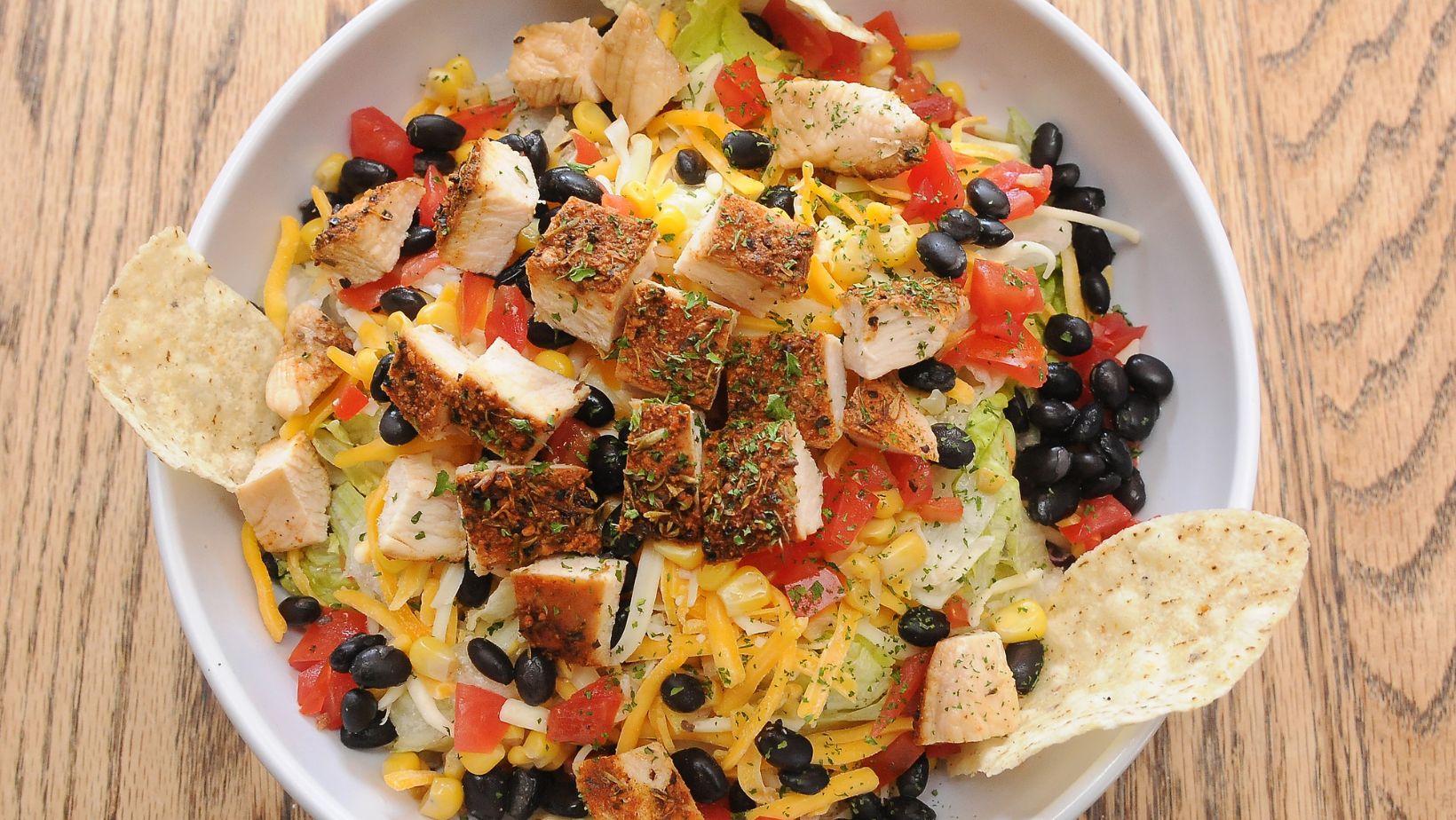Key Takeaways
-
- Simple and Quick Recipes: College students can prepare healthy meals in minutes, allowing for a balanced diet without sacrificing time and taste.
-
- Nutrient-Dense Ingredients: Focus on budget-friendly staples like rice, beans, and seasonal produce to maintain nutrition while staying within budget.
-
- Macronutrient Balance: Incorporate a balance of carbohydrates, proteins, and healthy fats to support energy levels and overall health.
-
- Meal Planning Benefits: Planning meals ahead helps save time, reduce costs, and introduces variety, making healthy eating more enjoyable.
-
- Healthy Snacks: Easy-to-prepare snacks like nut butter, fruit, and yogurt can sustain energy throughout busy college days.
-
- One-Pan and Microwave Options: Quick one-pan dishes and microwave meals streamline cooking and cleanup, providing nutritious choices for students on the go.
Navigating college life can be a whirlwind of classes, late-night study sessions, and social events. Amidst the chaos, maintaining a healthy diet often takes a backseat. However, with the right recipes, college students can fuel their bodies without sacrificing time or taste.
Healthy eating doesn’t have to be complicated or expensive. Simple, nutritious meals can be whipped up in minutes, perfect for busy schedules and tight budgets. This article explores a variety of
delicious recipes that are not only easy to prepare but also packed with the nutrients needed to keep energy levels high and minds sharp. Whether it’s a quick breakfast or a satisfying dinner, these meals will help students thrive both academically and personally.
Healthy Recipes for College Students
Veggie-Packed Stir-Fry
-
- Ingredients: Broccoli, bell peppers, carrots, snap peas, soy sauce, ginger, garlic, cooked rice or quinoa.
-
- Preparation: Sauté chopped vegetables in a pan, add minced garlic and ginger, stir in soy sauce, and serve over rice or quinoa.
-
- Benefits: Rich in vitamins and minerals, this dish provides energy and supports immune health.
Quick Chickpea Salad
-
- Ingredients: Canned chickpeas, cherry tomatoes, cucumber, red onion, olive oil, lemon juice, parsley.
-
- Preparation: Rinse chickpeas, chop vegetables, mix all ingredients in a bowl, and drizzle with olive oil and lemon juice.
-
- Benefits: High in protein and fiber, this salad helps maintain fullness and energy levels throughout the day.
Single-Serving Overnight Oats
-
- Ingredients: Rolled oats, milk or yogurt, honey, fruit, nuts or seeds.
-
- Preparation: Combine oats and milk in a jar, add sweetener and toppings, refrigerate overnight.
-
- Benefits: Provides a quick breakfast option packed with fiber and healthy fats for sustained energy.
Easy Vegetable Omelet
-
- Ingredients: Eggs, spinach, tomatoes, onions, cheese.
-
- Preparation: Whisk eggs, pour into a heated skillet, add chopped veggies, and cook until eggs are set.
-
- Benefits: A high-protein meal that supports muscle health and offers essential nutrients.
Healthy Banana Pancakes
-
- Ingredients: Ripe bananas, eggs, oats, baking powder, cinnamon.
-
- Preparation: Blend ingredients until smooth, cook batter on a skillet until golden brown.
-
- Benefits: Naturally sweet and gluten-free, these pancakes provide energy without added sugars.
Simple Vegetable Soup
-
- Ingredients: Mixed vegetables, broth, herbs, beans.
-
- Preparation: Combine all ingredients in a pot, simmer until vegetables are tender.
-
- Benefits: This low-calorie dish hydrates and nourishes, offering a comforting meal option.
Greek Yogurt Parfait
-
- Ingredients: Greek yogurt, granola, berries, honey.
-
- Preparation: Layer yogurt, granola, and berries in a cup, drizzle with honey.
-
- Benefits: Rich in protein and antioxidants, this parfait serves as a nutritious snack or breakfast.
One-Pan Pesto Chicken and Veggies
-
- Ingredients: Chicken breast, cherry tomatoes, zucchini, pesto sauce.
-
- Preparation: Place chicken and veggies in a baking dish, coat with pesto, and bake until chicken is cooked through.
-
- Benefits: This easy-make dish provides lean protein and essential nutrients from vegetables in a single meal.
Rice and Beans Bowl
-
- Ingredients: Brown rice, black beans, corn, avocado, lime juice, spices.
-
- Preparation: Cook rice, warm beans, mix with corn and spices, top with avocado and lime juice.
-
- Benefits: A complete protein source, this bowl offers filling and nutritious options for lunchtime.
Quick and Easy Meals

College students benefit from meals that require minimal time and effort. These recipes combine convenience and nutrition to support a busy lifestyle.
One-Pan Dishes
One-pan dishes simplify meal preparation and cleanup. These meals require fewer ingredients without sacrificing nutrition. Here are some efficient options:
-
- One-Pan Pesto Chicken: Combine chicken breasts, mixed vegetables, and pesto in a single pan. Bake for 25 minutes at 375°F for a hearty, protein-rich meal.
-
- Vegetable Stir-Fry: Sauté a mix of favorite vegetables like bell peppers, broccoli, and carrots in olive oil. Add soy sauce and serve over brown rice for a wholesome dish.
-
- Quinoa and Black Beans: Cook quinoa in vegetable broth, then mix in canned black beans, corn, and spices for an easy, nutrient-dense meal.
Microwave-Friendly Options
Microwave meals offer quick solutions for students on the go. These recipes require minimal prep and cooking time:
-
- Microwave Scrambled Eggs: Beat eggs in a microwave-safe bowl, add cheese and spinach, then cook for 1-2 minutes. This dish provides a protein boost for breakfast or any time.
-
- Microwave Sweet Potato: Pierce a sweet potato with a fork, place on a microwave-safe plate, and cook for 5-7 minutes until tender. Top with Greek yogurt or black beans for added nutrition.
-
- Microwave Mug Meals: Combine ingredients such as vegetables, pre-cooked chicken, and rice in a mug. Heat for 2-3 minutes for a quick and filling meal.
These quick and easy meals cater to the dietary needs of college students while accommodating their tight schedules.
Budget-Friendly Ingredients
Budget-friendly ingredients help college students maintain a nutritious diet without overspending. Focusing on affordable staples and seasonal produce makes healthy eating accessible.
Staples Every College Student Should Have
-
- Rice: A cost-effective base for many meals, rice is versatile and can pair well with vegetables, proteins, or sauces.
-
- Pasta: Quick to cook and filling, pasta can be a foundation for various dishes like salads, stir-fries, or casseroles.
-
- Lentils: Rich in protein and fiber, lentils are inexpensive and can easily enhance soups, stews, or salads.
-
- Canned Beans: Affordable and packed with nutrients, canned beans provide essential protein and can be added to numerous recipes.
-
- Frozen Vegetables: Cheaper than fresh options year-round, frozen vegetables retain nutrients and are convenient for quick meals.
-
- Oats: Inexpensive and filling, oats serve as a great base for breakfast options like overnight oats or smoothies.
-
- Eggs: Budget-friendly and versatile, eggs offer protein and can be prepared in various ways for any meal.
Seasonal Produce for Cost Savings
-
- Broccoli: Affordable when in season, broccoli provides vitamins C and K, making it a great addition to stir-fries and salads.
-
- Tomatoes: In season, tomatoes are often less expensive and can enhance dishes with fresh flavors or sauces.
-
- Zucchini: When available in summer, zucchini is a low-cost vegetable that works well in pasta dishes or stir-fries.
-
- Spinach: Seasonal spinach offers a rich source of nutrients at a lower price point and can be used in salads, omelets, or smoothies.
-
- Apples: Fresh apple varieties provide budget-friendly snacks and can be used in baking or with yogurt.
-
- Carrots: Economical year-round, carrots add crunch and nutrients to meals and work well in soups or salads.
-
- Bell Peppers: Prices drop when in season, and bell peppers add color and nutrition to various recipes.
Nutritional Considerations
Healthy eating involves understanding macronutrients and the benefits of meal planning. College students should prioritize balanced diets to sustain their energy levels and overall well-being.
Balancing Macronutrients
Balancing macronutrients—carbohydrates, proteins, and fats—ensures students obtain essential nutrients.
-
- Carbohydrates: Choose whole grains like brown rice, quinoa, and whole wheat pasta for lasting energy.
-
- Proteins: Incorporate lean sources such as chicken, fish, tofu, and legumes to support muscle repair and growth.
-
- Fats: Opt for healthy fats from avocados, nuts, and olive oil to promote brain health and satiety.
Understanding the role of each macronutrient helps students develop meals that fuel their academic performance and personal activities.
Importance of Meal Planning
Effective meal planning simplifies nutritious eating and adheres to budget constraints.
-
- Time-saving: Planning meals ahead reduces daily cooking time.
-
- Cost-efficient: Writing shopping lists based on recipes minimizes impulse buys and food waste.
-
- Variety: Incorporating diverse recipes prevents monotony, encourages balanced eating, and keeps meals exciting.
Meal planning equips students to maintain a healthy diet despite busy schedules, ensuring they meet their nutritional needs consistently.
Snack Ideas for Busy Students
Healthy snacks help maintain energy levels and focus throughout hectic college days. Below are easy ideas for nutritious snacks tailored for busy students.
Healthy On-the-Go Snacks
-
- Nut Butter and Apple Slices: Combine the protein and healthy fats from nut butter with the fiber of apple slices. This portable snack satisfies hunger and boosts energy.
-
- Trail Mix: Mix nuts, seeds, and dried fruits for a nutrient-dense snack. This combination provides healthy fats, antioxidants, and carbohydrates, perfect for a quick energy boost.
-
- Energy Bites: Prepare energy bites using oats, nut butter, honey, and chia seeds. These bites offer a balanced source of energy and are easy to store in small containers.
-
- Greek Yogurt and Berries: Pack small containers of Greek yogurt and top with fresh or frozen berries. This snack delivers protein and antioxidants, promoting satiety and nutritional benefits.
-
- Vegetable Sticks and Hummus: Slice carrots, cucumbers, and bell peppers, pairing them with hummus for a crunchy, satisfying snack rich in fiber and healthy fats.
Preparing Easy Snacks in Advance
-
- Overnight Oats: Prepare overnight oats by mixing rolled oats, yogurt, milk, or a milk substitute, and fruit in a jar. Refrigerate overnight for a quick morning meal.
-
- Hard-Boiled Eggs: Boil several eggs at once and store them in the fridge. Hard-boiled eggs provide a convenient source of protein that complements various snacks.
-
- Frozen Fruit Packs: Portion out mixed fruits into freezer bags for quick smoothies or snack additions. This method retains nutritional value and adds convenience to busy days.
-
- Muffin Tin Snacks: Bake a batch of mini egg muffins using eggs, spinach, tomatoes, and cheese in a muffin tin. These can be stored in the fridge and reheated as needed.
-
- Nut Butter Jar Snacks: Fill small jars with nut butter and cut-up fruits or celery sticks. These serve as ready-to-eat snacks with minimal preparation required.
Meal planning
Healthy eating doesn’t have to be a challenge for college students. With simple recipes and budget-friendly ingredients, nutritious meals can fit seamlessly into their busy lives. By prioritizing meal planning and incorporating quick options, students can fuel their bodies and minds effectively.
Embracing wholesome snacks and easy-to-prepare dishes not only enhances energy levels but also supports academic success. With the right approach, maintaining a healthy diet can be both manageable and enjoyable. Students can take charge of their health while navigating the demands of college life, ensuring they thrive both academically and personally.
 College students benefit from meals that require minimal time and effort. These recipes combine convenience and nutrition to support a busy lifestyle.
College students benefit from meals that require minimal time and effort. These recipes combine convenience and nutrition to support a busy lifestyle.
